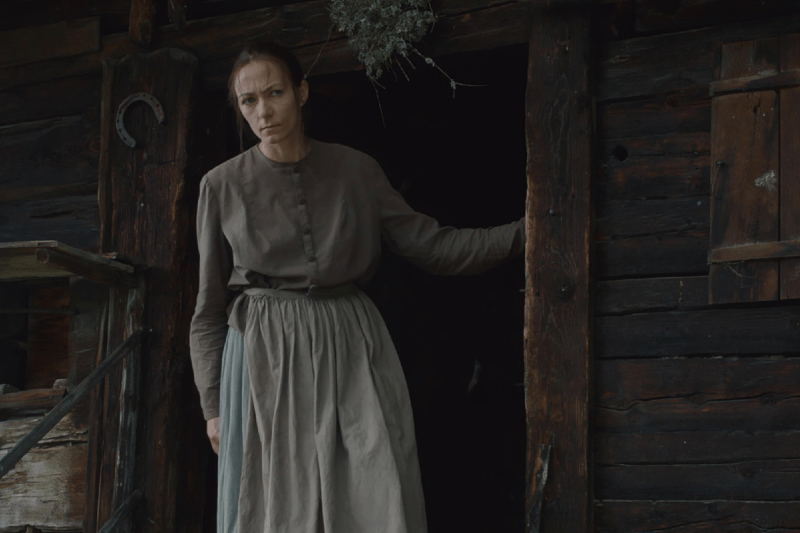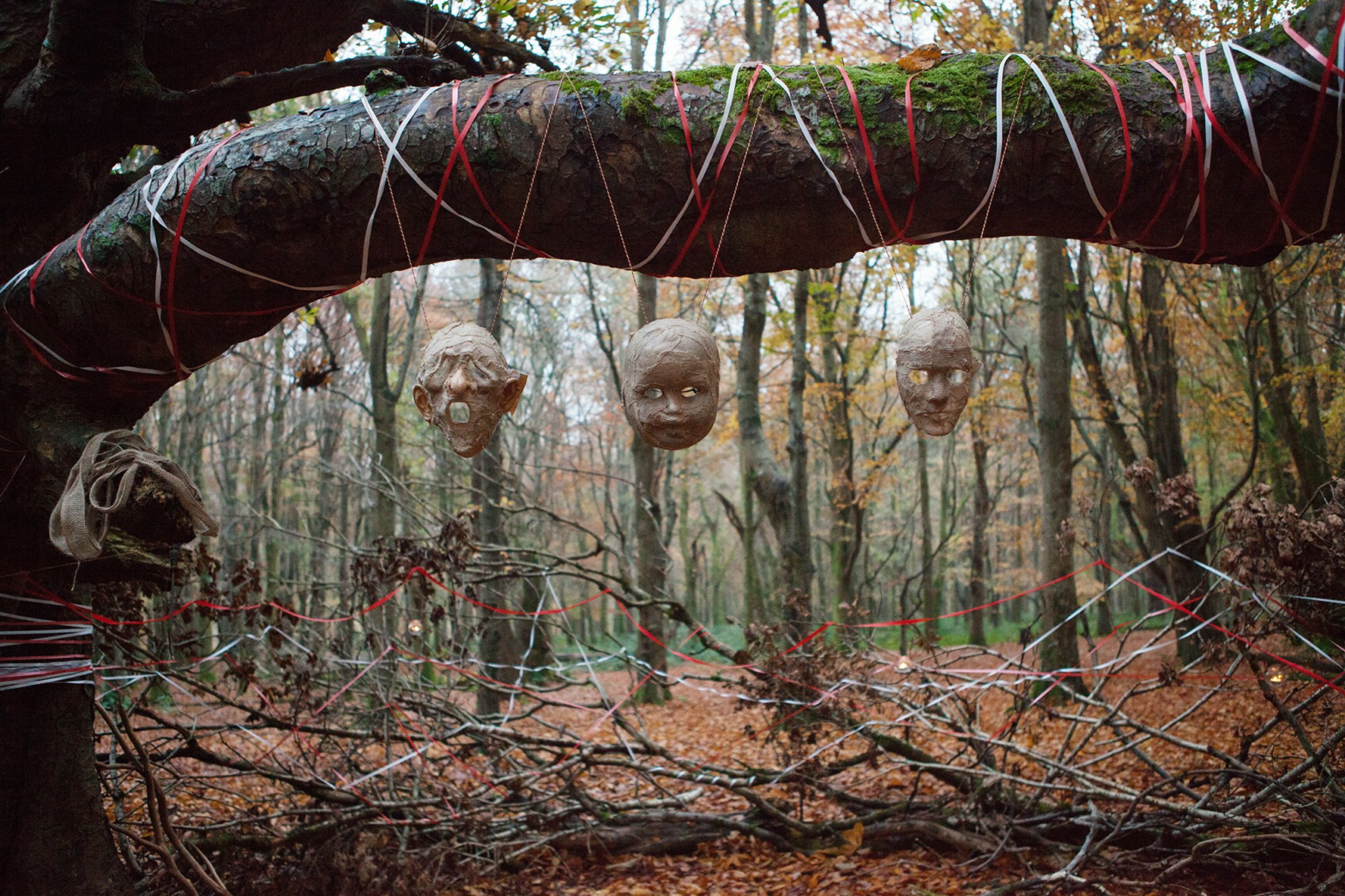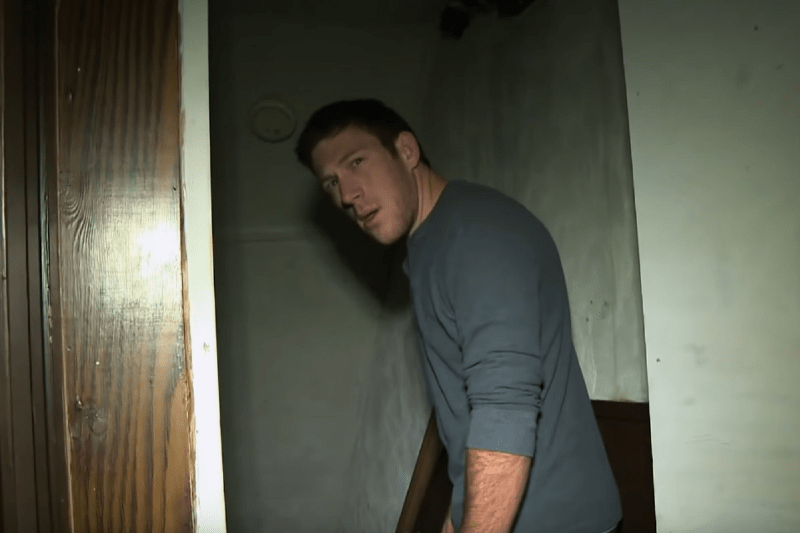Editorials
‘Hagazussa’ Melds Heathens and Rape-Revenge
June 25th, 2021 | By Mary Beth McAndrews

Lukas Feigelfeld’s feature film debut Hagazussa: A Heathen’s Curse is a haunting tale about a woman named Albrun (Aleksandra Cwen) and her mother. These two women are exiled from their small 15th-century German town after being accused of witchcraft. The film revolves around their experience with isolation and the rituals they prepare to cope with that loneliness. While Hagazussa is a moody story of witches and dark magic, it is also a rape-revenge film—one that achieves vengeance not through acts of violence but through a cathartic rejection of societal norms.
Become a Free Member on Patreon to Receive Our Weekly Newsletter
The Central Trauma of Hagazussa
At its core, Hagazussa is a story about how the trauma of sexual assault is used to tame women in the name of patriarchal control. Both Albrun and her mother are shown to be routinely sexually assaulted as punishment for causing catastrophes in town. They have become the scapegoats for the men in charge who refuse to claim responsibility for their failures.
It’s also insinuated that Albrun and her daughter are also products of these rapes, becoming human markers of trauma destined to suffer the same fate. This family of women is trapped in a seemingly never-ending cycle of abuse that has pushed them into quiet submission, living a hermit-like existence in the mountains.
Then, Albrun is raped again. But this time, it’s different. She and her mother suffered at the hands of the townsfolk for decades, which included routine rape as a way to humiliate and exert power over those they deemed evil. Yet, this specific rape is a total violation of trust as it’s birthed from the trickery of a supposed friend. Albrun meets Swinda (Tanja Petrovsky) as Albrun is being harassed by a group of young boys. Swinda comes to her rescue, shooing the boys away and offering to walk with Albrun to protect her.
There is no doubt that Swinda knows of Albrun’s supposed witchcraft, yet she still offers Albrun compassion. They form a tentative friendship—for once, Albrun is finally interacting positively with another person and doesn’t feel so alone. However, that kindness is a facade that is ultimately used to lure Albrun into a false sense of security.
Albrun is walking through the hills with Swinda when a man from the town ambushes her. Her alleged friend orchestrates Albrun’s rape, reinforcing modes of patriarchal power that have steeped even into the minds of women. Never before has Albrun trusted anyone. While her previous experiences with sexual assault are traumatic, there was no emotional connection with these men; she has come to expect such treatment. Here, she has finally begun to have a seemingly positive relationship with another person, but that is quickly shattered.
The Self-Destruction of Albrun
With this experience of betrayal, Albrun seeks revenge, not through a violent rampage but through self-destruction. After she poisons the village’s water source with a dead rat and her own urine, Albrun consumes psychedelic mushrooms to escape her reality. This grants her access to the wilder, more animalistic side of herself that she once feared.
Her perception of the world is warped as colors change; the energies of nature seem to come alive and meld together into one trippy nightmare. Not once did Albrun ever unleash violence on anyone, merely conforming to this fantasy world where she is the villain. But now, paradoxically, she can rise to meet such expectations and find demented freedom in the sudden rejection of those expectations.
Albrun’s final catharsis and animalistic transformation explicitly reject societal norms as dictated by the men in charge. She commits an inhuman act by drowning her baby and then eating her, leaning into the horror already projected upon her body. But Albrun sees infanticide as the only solution to saving her daughter from the world. Now she fully understands the treacherous cruelty that can be inflicted by both men and women of all ages.
Then, the film ends with Albrun’s death as she combusts with the sunrise. Even in her final moments, Albrun is refusing to obey anymore. Now, she breaks the cycle of abuse against her mother, herself, and perhaps even her daughter. No longer can these men violate their bodies or continue generations of abused women born out of trauma.
This perspective is tinged in tragedy—it symbolizes that the only way to escape the abuse is through the death and destruction of the female body. Feigelfeld creates a harrowing representation of how the act of escaping abuse is exhausting and may not always be successful, particularly when the survivor is isolated.
Conclusion
Hagazussa is an unconventional rape-revenge tale that doesn’t look at violent rage against rapists but instead a more personal embrace of expected monstrosity to reject patriarchal control. The tragedy of Albrun’s ultimate revenge portrays an honesty behind the reality of sexual assault and the exhausting journey of trying to grow after such a gross violation.
Sadly, this experience is unfortunately still relevant today. Even though Hagazussa takes place in the 15th century, its themes are on par with films such as Violation and Rose Plays Julie. These films are more interested in the consequences of revenge and the hollowness of such an act. Through broken friendships, violent mushroom trips, and a dread-filled atmosphere, Feigelfeld’s tale of witchcraft portrays a more profound truth about the nature of trauma.



